The best binoculars for birds, nature, and the outdoors
Athlon Optics Midas ED is your best bet.

By Daniel S. Cooper
This post was done in partnership with The Wirecutter, a buyer's guide to the best technology. Read the full article here.
To find the best binoculars, we had a professional ornithologist spend over 100 hours field-testing 17 pairs against his own $2,500 Leica Ultravids. After using our test pairs in the mountains and hills of Southern California, then on a research trip to the rainforests of southern Mexico, he found that the Athlon Optics Midas ED 8×42 pair was the best of the group, offering performance comparable to his Leicas for a fraction of the price and the widest field of view out of all the binoculars tested. This means you'll see more, and it will look better.
Who these are for
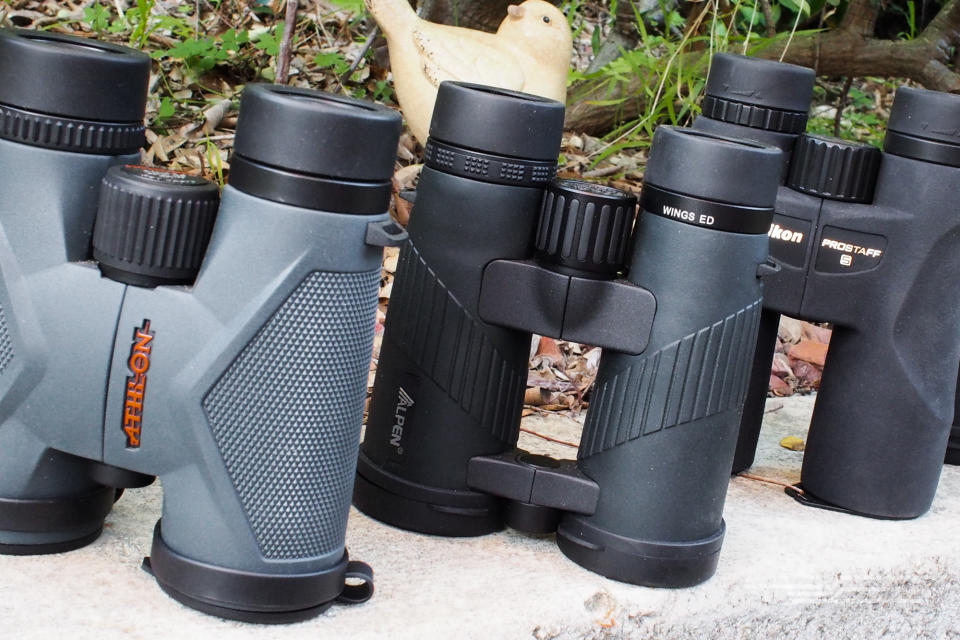
No matter what you plan to gaze at, your binoculars need to do two things well: They need to make distant objects closer, and they need to make them clearer. Photo: Dan Koeppel
Anyone looking to make faraway objects appear a bit closer should consider a good pair of binoculars. But you might wonder why this story is so oriented toward bird watching. The answer is simple: Binoculars that are great for birders are great for anyone looking to make things appear closer—whether you're hunting, watching sports, or otherwise. That's because birding asks everything you need to ask of binoculars. So even if you never plan to seek a scissor-tailed flycatcher or a harpy eagle, birding binoculars will do what you ask.
How we tested

The author testing binoculars in Mexico. Photo: Dan Cooper
We took our initial 17 models to a few favorite local Southern California beaches, mountains, and deserts to get a feel for their handling characteristics, durability, and images' quality. But we couldn't get an accurate handle on what actually looked better in such a familiar setting. With familiar objects, you know what you're going to see even before you lift the binoculars.
To really test the quality and effectiveness of the equipment, you need to start with the unfamiliar, such as, say, a set of birds that you don't see too often. Seeing unfamiliar birds requires the assimilation of a large number of unfamiliar marks all at once, preferably under physically demanding—or at least very different—circumstances.
With that in mind, we selected my top five binoculars from the initial tests and took them with us to unfamiliar territory in southern Mexico for 10 days of advanced testing. Working in the field is the ultimate test for any pair of binoculars. The optics need to do some very heavy lifting while your brain sorts through several near-identical species.
Our pick
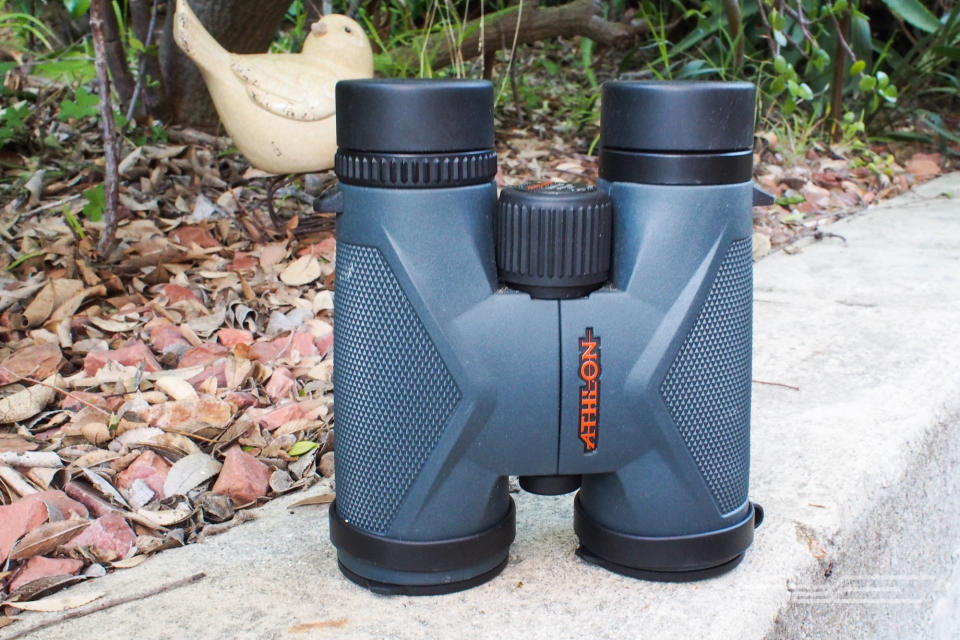
The Athlon Optics Midas ED binoculars are an incredible bargain, with spectacular optics, light weight, and durable construction. Photo: Dan Koeppel
The Athlon Optics Midas ED 8×42—along with nearly all of the other binoculars we tested—are the beneficiaries of a revolution in optical quality caused by the falling costs of precision manufacturing and optical treatments. For under $300 you can get a pair of binoculars that matches products that cost hundreds, or even thousands, more.
The Athlon pair has an admirable brightness, bringing in color under harsh conditions. For example, several other models tested would not allow our tester to differentiate throat coloration of warblers in treetops early in the morning. With the Athlons, it was almost as if the glaring, whitish background of sky wasn't there—the colors popped to life.
The Athlon Midas ED pair's optics aren't its only strong suit: These are exceptionally durable binoculars that easily withstood the humid, dusty, and hostile environment of the Mexican rain forest and harsh sun of the Californian desert. And their focus dial adjusts reliably and smoothly across a wide range of depths, making it easy to focus on what you're trying to see, no matter where it is.
Almost as good
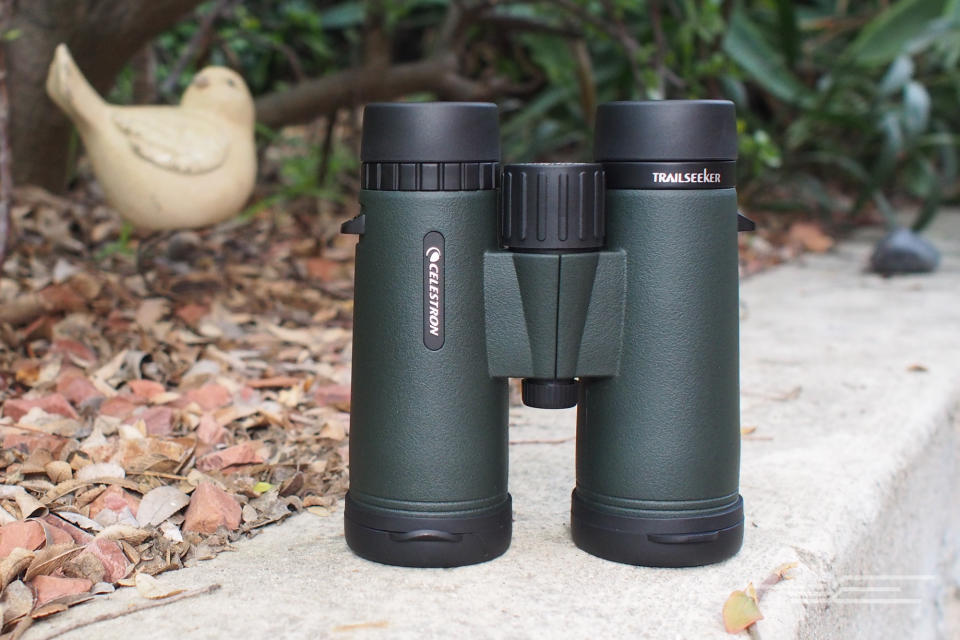
Celestron's TrailSeeker binoculars are rugged and have an expansive field of view. Photo: Dan Koeppel
Our runner-up, the Celestron TrailSeeker 8×42s, have rugged, armored construction and were among the lightest binoculars we tested (23 ounces). Optically, the TrailSeekers offered exceptional light-gathering abilities. Our tester recalled watching a northern harrier soaring against the sky and the colors of the streaks below were as sharp as can be. Another bonus is this pair's ability to focus close—as near as 6.5 feet, with a field of view of 426 feet at 1,000 yards. The outer edges of that expansive field of view did have some distortion, though.
One caveat: The Celestrons we received had an odd catch in the focus dial; a second pair we checked out in store didn't have that flaw. Be sure to check the pair you end up with to make sure everything moves smoothly.
Splendid views at a great price
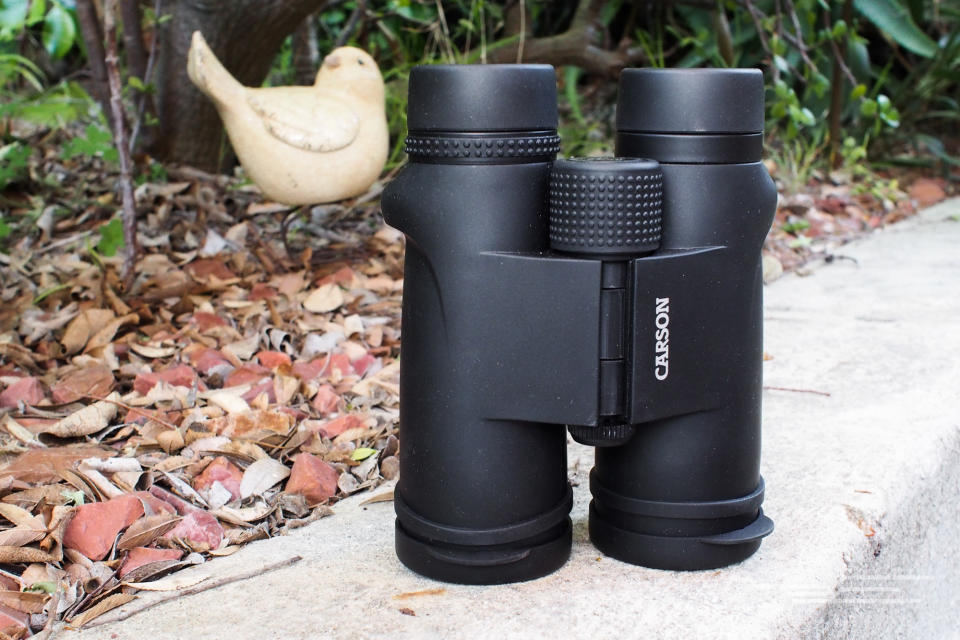
The Carson VP is about as inexpensive as a really good pair of binoculars can be. Photo: Dan Koeppel
We can't really recommend any binoculars that cost under $100; those tend to have very poor optics and aren't durable enough to survive hard knocks without coming out of alignment. But for just a bit more, the very functional Carson VP pair offers excellent optics, a minimum focus distance of 6.6 feet, and rugged waterproof and fogproof construction.
Very bright with a great case
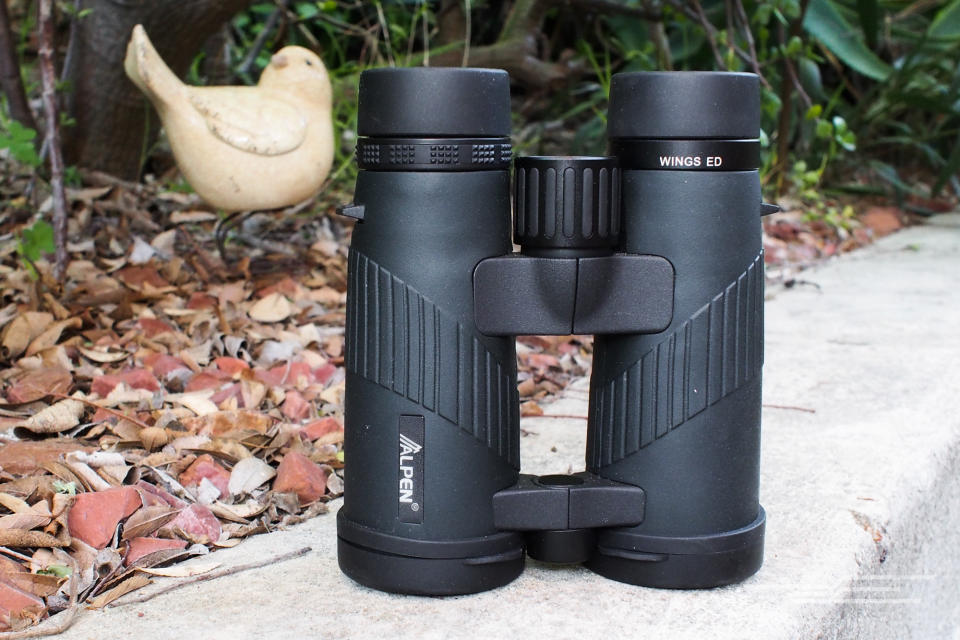
The Alpen Wings ED are as good as binoculars get, and they come with a very rugged, versatile carrying-case system. Photo: Dan Koeppel
Another model that performed very well, Alpen Wings ED, came in over our $350 price limit. This is as good a pair of binoculars as we've ever tried and is further proof that the overall market for binoculars has been turned upside down in terms of quality and price. The Alpens are brighter, a bit sleeker, and were a little easier to carry than the Athlons. When looking through both models side by side, you might notice a slightly superior image quality with the Alpens over the Athlons, but viewed apart, both are excellent.

Though all of the binoculars we tested come with cases, the Alpen Wings ED went above and beyond with its case system. Video: Dan Koeppel
The real reason the Alpens are worth you paying more for is their excellent storage system: They offer an adjustable, wide-band neoprene strap, and a hard, form-fitting holster that attaches to your belt or can hang around your neck via your binocular strap. If that's not enough, the holster fits inside an included hard-shell nylon zippered case.
This guide may have been updated by The Wirecutter. To see the current recommendation, please go here.
